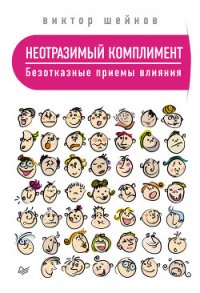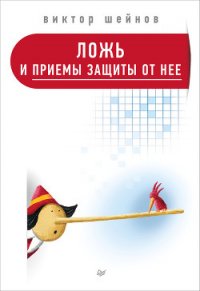Юмор как способ влияния - Шейнов Виктор Павлович (читать книги онлайн без регистрации .TXT) 📗
35. Gueguen N. Psychologie de la manipulation et de la soumission. – Dunod., Paris, 2002.
36. Jones E. E., Wortman C. Ingratiation: An attritional approach. – Morristown, 1973.
37. Jones J. A. The masking effects of humor on audience perception of message organization. International Journal of Humor Research, 2005,
18 (4), 405–417.
38. Izard K. The Psychology of Emotion. – N. Y., 1991.
39. Keltner D., Capps L., Kring A. M., Young R. C, Heerey E. A. Just teasing: A conceptual analysis and empirical review. Psychological Bulletin,
2001. 127(2), 229–248.
40. Kenrick D., Neuberg S., Cialdini R. Social Psychology, Boston, 2002.
41. Lyttle J. The effectiveness of humor in persuasion: The case of business ethics training. Journal of General Psychology, 2001, 128 (2), 206–216.
42. Madden T. J., Weinberger M. G. The effects of humor on attention in magazine advertising. Journal of Advertising, 1982, 11 (3), 8—14.
43. Martin R. A. Psychology of Humor: An Integrative Approach. – Oxford, Elsevier Ins., 2007. [2]
44. Mulkay M. On humor: Its nature and its place in modern society. NewYork: Basil Blackwell, 1988.
45. Myers D. Social Psychology. – N. Y., 2002.
46. O’Quin K., Aronoff J. Humor as a technique of social influence. Social Psychology Quarterly, 1981, 44 (4), 349–357.
47. Panksepp J. The riddle of laughter: Neural and psycho evolutionary under-pinning of joy. Current Directions in Psychological Science, 2000, 9(6), 183–186.
48. Petty R. E., Cacioppo J. T. The effects of issue involvement on responses to argument quantity and quality: Central and peripheral routes to persuasion. Journal of Personality and Social Psychology, 1984, 46, p. 69–81.
49. Taylor Sh., Peplou L., Sears D. Social Psychology. – N. Y., 2002.
50. Verderber R., Verderber К. Communicate Tenth edition, Wadsworth, Us, 2002.
51. Weinberger M. G., Gulas C. S. (1992). The impact of humor in advertising: A review. Journal of Advertising, 27(4), 35–59.




